Reading and understanding food labels can be downright confusing when you are carb counting. After all, food labelling regulations are complex and food manufacturers rely heavily on “confusion marketing”.
That’s why it’s essential you learn how to read nutrition labels.
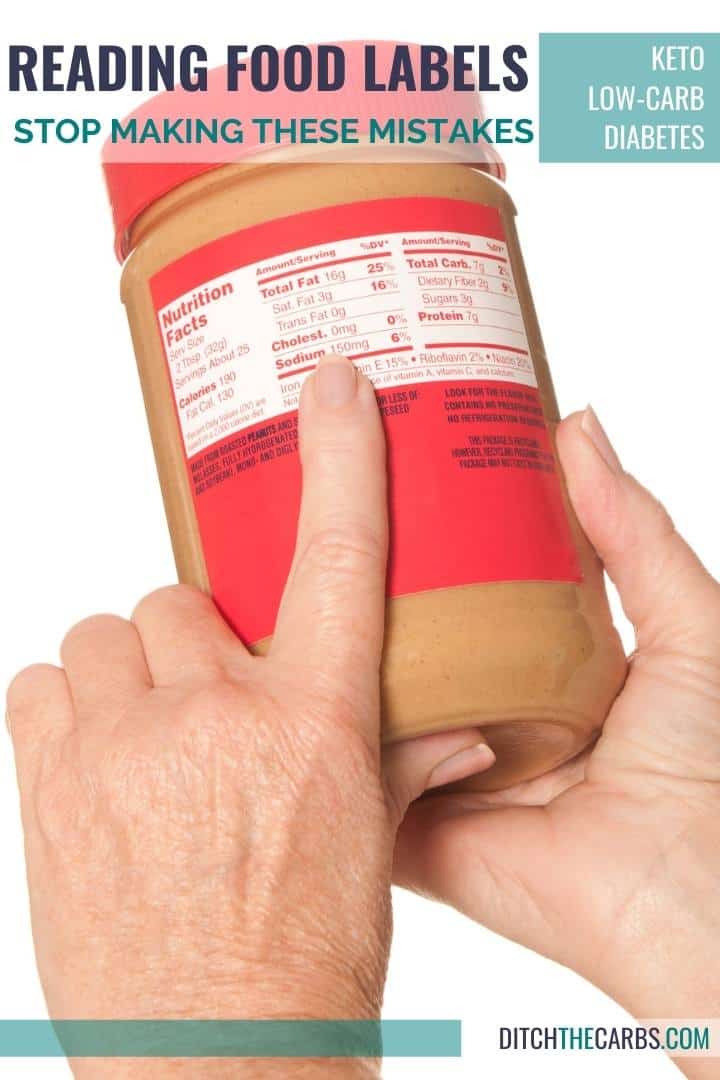
Carb counting 101
Firstly you need to understand the difference between total and net carbs.
TOTAL CARBS = sugars + starches +fibre
NET CARBS = total carbs – fibre
Carbohydrates will be on the nutrition label are often broken down into carbohydrates, sugars, starch, and fiber. However, each brand may display its nutritional contents differently. And depending on which country you are in they will either show NET or TOTAL carbs and sometimes it isn’t clear which they are referring to.
Typically the US nutrition labels show TOTAL CARBS
Typically UK nutrition labels show NET CARBS
NZ/AUST show net carbs (and stating fibre is optional)
And it’s for this reason that I do not recommend carbs counting apps such as MyFitnessPal and Carb Manager. There is too many incorrect “user added’ entries. Reader’s tell me every day they find errors because of a user misunderstanding total or net carbs and users from across the world who use total or net systems.
I recommend using nutritional values from cronometer.com You can sign up for a FREE account and track your daily carbs, electrolytes, and vitamins.
What are the benefits of reading nutrition labels?
Food labels provide information that assists the public in making informed choices about what to consume. It helps to:
- Compare and choose between similar products
- Understand what ingredients are in a food product
- Count calories, and in the case of the keto diet, enable carb counting in order to stay within the 20g daily limit
- Stay clear of food products that may be harmful i.e. those containing ingredients that we may be allergic to
- Select food products that are of most interest based on their nutritional content
- Verify any health claims the manufacturers of those foods make
Many have questioned the effectiveness of food labels or whether it adds further confusion for the consumer.
In an effort to make nutrition labels more reader-friendly, the FDA has published new rules for nutrition labels which are to be enforced in 2021 and gives the current nutritional label a new and improved facelift. Whether this assists the consumer is still yet to be seen. In the meantime though, here are some helpful tips on how to decode the current food label as a whole.
Why is reading labels so confusing?

Get into the habit of ignoring the “fluff and wonder” on the front, and turn straight to the back and only look at the nutrition panel.
Are you ready to lose weight and heal your body for life (without dieting, drugs, or making yourself miserable)?

Our free on-demand video training will walk you through how to make this THE year you set health goals…and keep them.
The labelling on the front of food products often only describe any advertising and marketing claims to attract the health-conscious consumer when the food itself may in fact be highly processed and unhealthy or not within certain dietary parameters as it claims to be. This is called the “healthy halo”.
If you follow a low-carb or ketogenic diet, then you’ll already be aware of the importance of understanding the quality and quantity of the macronutrients in each meal, especially in an effort to promote weight-loss by adhering to a daily carb limit of 20 grams and fuelling your body with nutrient-dense foods.
But whether you count total daily calories to meet a certain deficit or you practice carb counting, reading food labels is fundamental to your weight-loss success and overall health.
Does calorie counting work? No. The one vital aspect that calorie counting doesn’t address is the effect of foods on your hunger hormones and fat storage hormones.
Weight gain is a hormone imbalance, not a calorie imbalance.
What’s the most important thing to ignore on a food label?

Ignore The Claims On The Front Of Food Products
Research has shown that adding health claims to front labels of food products makes people more likely to purchase that product over the same product that doesn’t list such claims.
Food labels have consequently been designed and worded in order to lure potential customers into purchasing products by making health claims even if these claims don’t hold true or are misleading.
A good example of this can be found in the labels used for high-sugar cereals such as Sultana Bran – despite what’s being implied, this product is definitely not healthy.
The front of the box states it is high in fibre, cholesterol-lowering and has a 4.5 star rating, but look at the nutrition label and it tells another story.
Per 3/4 cup serving (and most people serve 1-2 cups) + 1/2 cup milk = 37.9g carbs, 15.5g sugars. The only reason it has any vitamins is because it has been fortified.
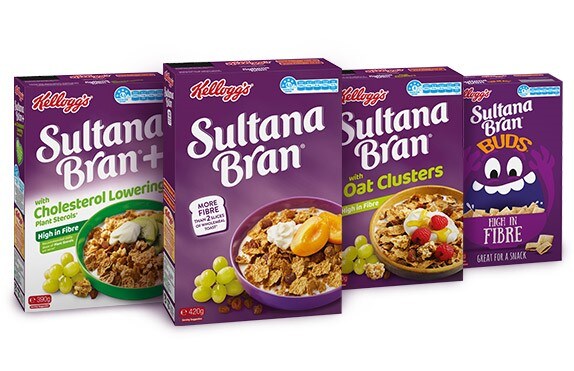
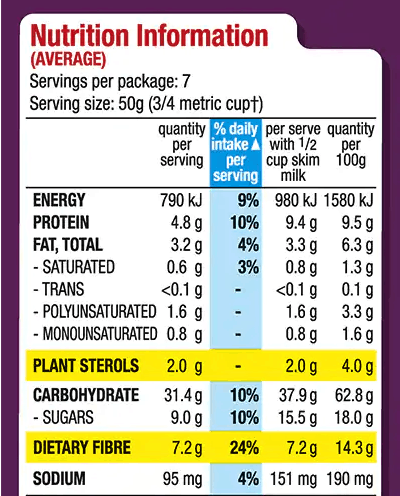
Since food labels on the front of food packages can’t be relied upon, it makes the practice of reading food label worksheets and inspecting the ingredients list that much more important.
Can you trust food labels? What do the common phrases REALLY mean
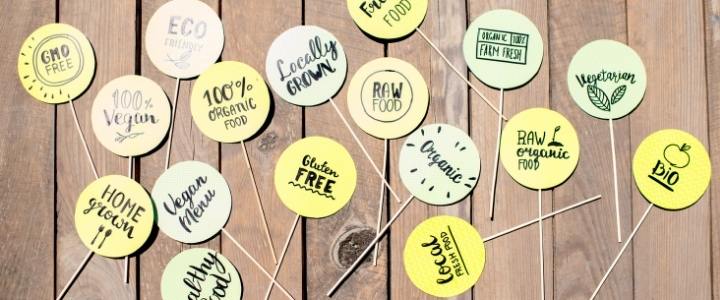
Here are a few common claims that you may have already come across and what they actually refer to:
Low Fat
The product has reduced fat content but often has increased sugar to compensate for taste and texture.
Light or Lite
This means that the product has been processed to reduce calories or fat content. Some are merely watered-down while others include added sugars to compensate for reduced taste due to reducing the tasty fat.
Low Calorie
These products have one third fewer calories than the brand’s original product although if you look carefully at other brands, the low-calorie version is often close in total calories to another brand’s original and you’ll often pay a higher price for the low-calorie version.
Low Carb or Keto
While low-carb foods are advocated in a ketogenic diet, many store-bought low-carb products are highly processed similar to low-fat foods.
Many low-carb and keto products such as bars, chocolate and shakes contain sweeteners that aren’t recommended such as maltitol.
So it’s best to stick to low-carb whole foods.
Multigrain
While this may sound healthy, all it means is that the product contains various types of grain, most of which are refined.
Made with Whole Grains
Check to see whether “whole grains” are listed in the top 3 ingredients otherwise this amount is negligible.
Gluten Free
This simply means that the product doesn’t contain gluten BUT gluten-free foods are highly processed, contain high-carb flours such as potato starch or rice flour and are often fortified. Gluten-free foods are often loaded with unhealthy fats and sugar making this option not so healthy after all!
Natural
This has no definition whatsoever. In no way does the word “natural” prove that the product itself is natural. Just watch this video.
Organic
This term means very little if the product is still something like sugar!
No Added Sugar
Some products don’t require added sugar as they are naturally already high in sugar. This doesn’t make the product itself healthy and you may even find that certain sugar substitutes have been added.
Fortified or Enriched
Being fortified means that another substance has been added to the product but that doesn’t necessarily make it healthy. For example, Vitamin D is often added to milk.
Fruit Flavored
This term is common among processed products that have little to no natural fruit but instead are packed with chemicals that are designed to taste like fruit such as fruit flavoured yoghurts.
Zero Trans Fat
This only means that one serving contains “less than 0.5 grams of trans fat per serving.” If serving sizes are misleadingly small and you consume more, the product then still contains trans fat.
How to analyse the ingredients list
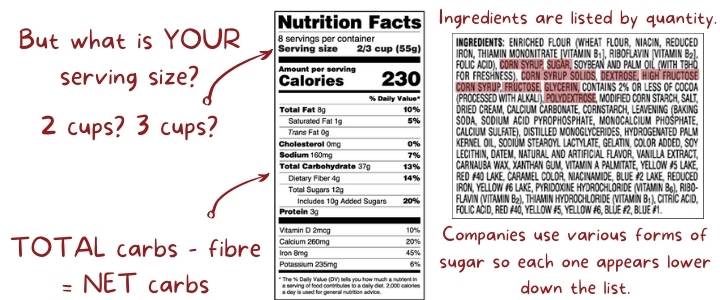
Ingredients are always listed by quantity. Those that have been used the most are listed at the top followed by the lesser used.
Try to avoid those food products that have a very long list of ingredients that you can’t pronounce! Long ingredient lists suggest a highly processed product packed with preservatives.
If you find a product whose first three ingredients listed include refined grains, a type of sugar, or hydrogenated oils, skip this entirely.
You also need to recognise all the names of sugar. Manufacturers know if they use multiple forms of sugar, they will individually appear lower in the list of ingredients.
What is a serving size?
Nutrition labels list the number of calories and nutrients in a standard product serving which is usually a single serving, however, often these serving sizes are unrealistic leading people to consume more than 1 serving at a time.
This is a known tactic to deceive consumers into thinking that they are eating fewer calories.
For example, some granola/cereals state the serving size is 1 cup, whereas, in reality, most people consume 2 or 3 cups.
Some people are also unaware of this serving metric which also leads to overconsumption of calories.
In order to truly know the real nutritional value of what you are eating, always multiply the serving listed by the number of servings you intend to consume or have consumed.
How to read nutrition labels for low carb + keto
Always remember that the number of servings you consume determines the number of carbs actually consumed. To count your carbs, simply multiply the carbs listed for 1 serving by the number of servings you actually consumed.
Know the 50 names of sugar
Sugar goes by many different names, some that may be familiar while others not so much. If you see sugar listed as one of the top three ingredients or you see many types throughout the ingredients list then that product is high in added sugar and should be avoided.
Do you know the 50 names of sugar?
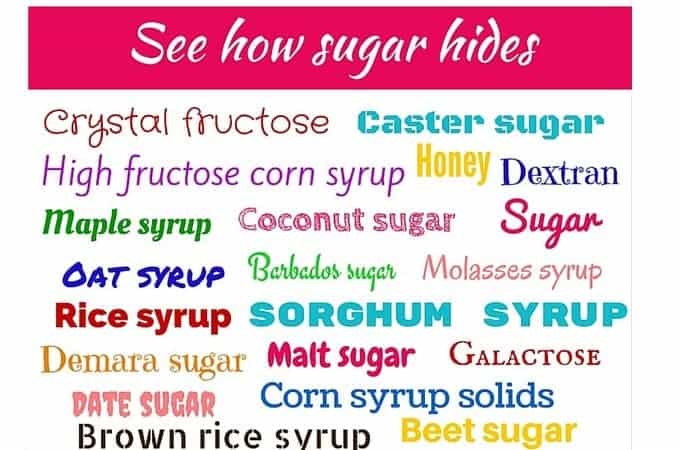
Ingredients to avoid
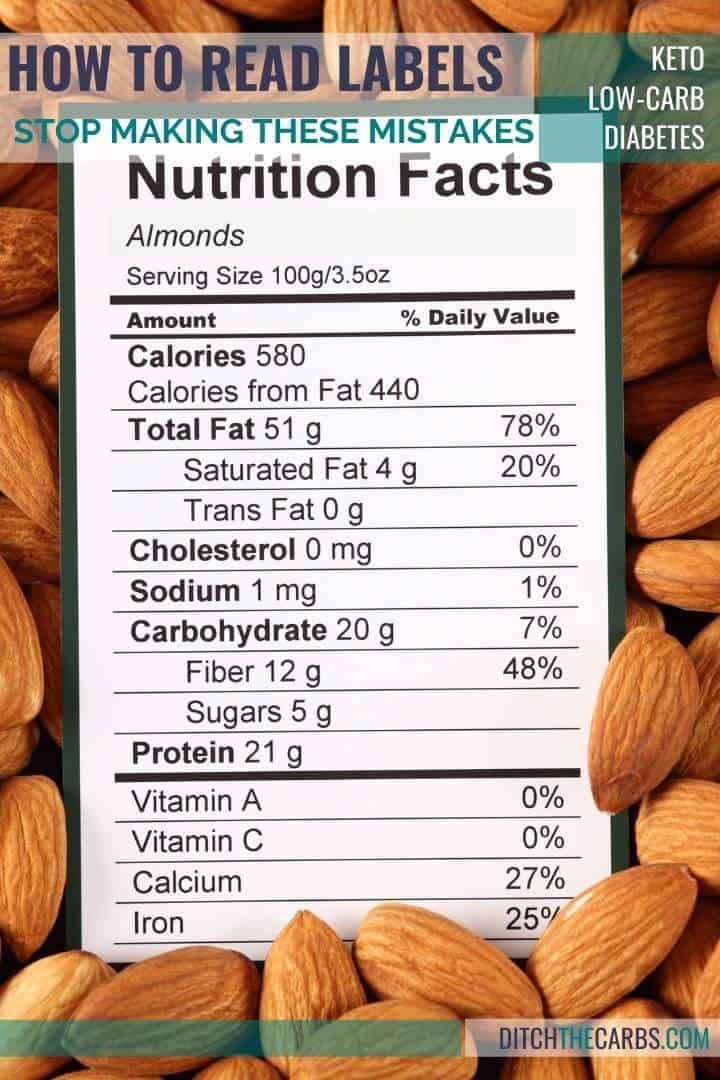
Most people know how to read the nutrition facts label for carbs but many pay very little attention to the ingredients list.
So you may be staying within your carb limit but your food is actually packed with unhealthy and processed foods. This is known as dirty keto.
Here are just 4 of the worst ingredients that should be avoided:
Partially Hydrogenated Oil
Another name for this is trans fat which is very harmful to your heart and waistline. This type of trans fat lowers good cholesterol and increases the bad type of cholesterol and can be found in processed products such as baked goods, popcorn, chips and fast foods. Look out for “Partially hydrogenated,” “fractionated” or “hydrogenated.”
Sodium Nitrite
A preservative used to prolong the shelf life of many meat products such as processed bacon, hot dogs, sausage, SPAM and some packaged deli meats. Stick to fresh meats from the butcher that don’t contain this preservative.
Aspartame
A controversial and common artificial sweetener found in many products far sweeter than natural sugars and claimed to cause adverse health symptoms such as headaches, nausea, muscle spasms, mood swings, depression and more severe diseases long term such as strokes and cancer. But many studies also refute this.
Maltitol
Whilst this is a sugar-free sweetener, it still raises blood glucose and so should be avoided. It is often listed separately from other carbs and so you might assume it is not to be counted. Maltitol will easily knock you out of nutritional ketosis so make sure you check labels on sugar-free chocolate, bars and shakes.
How to calculate net carbs for keto diet
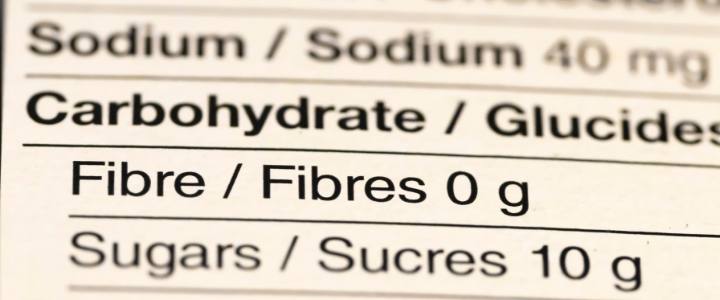
If you follow a ketogenic diet, then you will know that your daily carb intake is limited to about 20 grams of carbs.
This is important to note for when selecting food from the store as the nutrition facts label will indicate the total carb count per serving quantity which will give you a good indication of whether the food is high in carbs, moderate or low.
Remember to also consider the fibre listed as you will want to calculate your total net carbs per serving which is total carbs less fibre. You also need to be aware of what sugar alcohols are in your food, and do they count?
As with the calorie counting method of weight loss, when it comes to counting carbs and reading food labels, make sure that you have calculated your total net carb intake correctly by multiplying it by the number of servings you intend to consume or have consumed.
The keto diet advocates both quality of food (whole foods that are nutrient-dense) as well as quantity by keeping within the daily carb limit to promote and maintain ketosis (the state of burning fat for fuel instead of sugar).
The bottom line
Always be cautious of food marketing and false or misleading claims printed on food products – instead, let the ingredients list together with the nutrition facts label paint you a clear picture of what you have in front of you.
If there are long lists of ingredient names that you can’t pronounce, then the food is most likely highly processed and should be swapped for shorter ingredient lists that you are well acquainted with.
Now you know what to look for to choose keto-friendly nutrient-dense foods, make sure that you only consume the number of servings that will help you to reach your health and weight-loss goals.
Most serving sizes are set at one which means you’ll have to do a little bit of math to figure out the real nutritional value you’ll be consuming should you want that extra cookie!
What if you could actually take control of
your health in just 10 days?
It’s not your fault you can’t lose weight as a woman over 40 even though you’ve likely tried literally everything. Your metabolism probably feels broken and your hormones are likely all out of whack.
But you can fix it all with ONE simple change: eliminate sugar. We make it super easy with daily lessons teaching you the science behind what makes us gain weight in our midlife and beyond! Are you ready to get started now?












Is Monk Fruit sugar okay to use on Keto? The video on the lady making the cinnamon rolls, are those okay for Keto, was she she using white flour??? We don’t eat any thing white in our house!!!
Yes, I like to use monk fruit, stevia, or erythritol. None of them spike my blood sugars so are wonderful to use and taste like the real thing. You can see all of my favourite sweeteners in my Ultimate Guide To Sweeteners.
when buying a premade salad to take to work, are most of the carbs in croutons and the dressing they have in the little plastic sleeve? Is it best to skip the prepackaged dressing and use your own dressing?
Absolutely correct. Even better, and cheaper, is to just buy a bag of leafy greens or mesclun. Or grab a large lettuce, rip off the outer large leaves, pop cheese, mustard, and ham inside, wrap up the lettuce leaf and you’ve got an instant keto wrap.